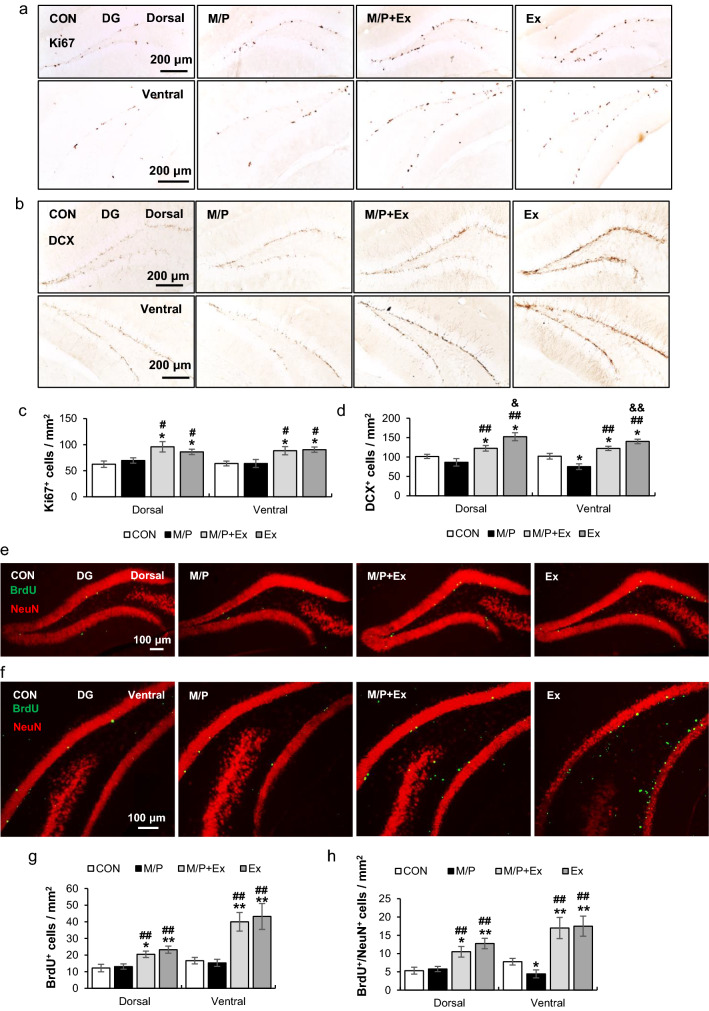Figure 4.
Rotarod walking exercise reduced the decline of neuronal differentiation in the ventral SGZ region of M/P-treated mice. (a) Photomicrographs of the immunoreactivity of SGZ Ki67+ cells (CON, N = 6; M/P, N = 7; M/P + Ex, N = 7; Ex, N = 6, 100 × of magnification). (b) Photomicrographs of the immunoreactivity of SGZ DCX+ cells (CON, N = 6; M/P, N = 7; M/P + Ex, N = 7; Ex, N = 6, 100 × of magnification). (c) Quantification of the immunoreactivity of SGZ Ki67+ cells showing that exercise increased the number of Ki67+ cells, regardless of MPTP treatment. (d) Quantification of the immunoreactivity of SGZ DCX+ cells showing that exercise restored the M/P-induced decrease in DCX+ cells in the ventral SGZ, and increased the number of DCX+ cells in the dorsal region, regardless of MPTP treatment. (e) Photomicrographs of the double fluorescent staining of dorsal SGZ BrdU+ and NeuN+ cells (CON, N = 8; M/P, N = 9; M/P + Ex, N = 9; Ex, N = 8, 100 × of magnification). (f) Photomicrographs of the double fluorescent staining of ventral SGZ BrdU+ and NeuN+ cells (CON, N = 8; M/P, N = 9; M/P + Ex, N = 9; Ex, N = 8, 100 × of magnification). (g) Quantification of the fluorescent staining of SGZ BrdU+ cells showing that exercise increased the number of BrdU+ cells, regardless of MPTP treatment. (h) Quantification of the fluorescent staining of SGZ BrdU+/NeuN+ cells showing that exercise restored the M/P-induced decrease in BrdU+/NeuN+ cells in the ventral SGZ, while increasing the number of BrdU+/NeuN+ cells in the dorsal region, regardless of MPTP treatment. Data are presented as mean ± SEM. *p < 0.05, vs. CON; **p < 0.01, vs. CON; #p < 0.05, vs. M/P; ##p < 0.01, vs. M/P; &p < 0.05, vs. M/P + Ex; &&p < 0.01, vs. M/P + Ex.

